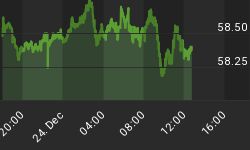The Chicago Fed publishes a national economic activity index each month that only the Chicago Fed's economic research department and I pay attention to. This index is not a leading one, but is a coincident one. The Chicago Fed National Activity Index (CFNAI) is a weighted average of 85 existing monthly indicators of economic activity drawn from five broad categories: 1) output and income 2) employment, unemployment and hours 3) personal consumption, housing starts and sales 4) manufacturing and trade sales and 5) inventories and orders. This index is constructed to have an average value of zero and a standard deviation of one. Because economic activity tends toward trend growth rate over time, a positive index corresponds to growth above trend and a negative index corresponds to growth below trend. The 3-month moving average of the CFNAI in May was minus 0.20 - the ninth consecutive month in which it has been in negative territory. The CFNAI is suggesting that second-quarter real GDP growth will come in below-trend, which would mark the fifth consecutive quarter to do so. What is the trend of GDP growth? In the past 40 years, real GDP has grown at a compound annual rate of growth of 3.05%. So, the recent behavior of the CFNAI is pointing to sub-3% real GDP growth in Q2, which, if it were to occur, would be below what most forecasters (but not us) are currently expecting. The chart below contains the behavior of the CFNAI and quarter-to-quarter annualized real GDP growth, with the 3.05% trend rate of real GDP growth shown as the blue horizontal line.
Chart 1
















